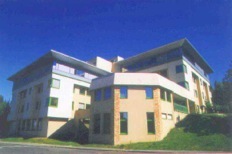Research environment
The MISTIC team is part of the Interstellar Matter and Cosmology (MIC) research group at IAS. This group gathers 25 scientists (18 permanent staff and 7 post-docs) and 12 PhD students. The scientifc activity of the group focusses on interstellar dust, the physics of the interstellar medium, galaxy formation and the early universe, combining observations, modelling and theory. The MIC staff scientists are internationally recognised leaders in these fields.
The MISTIC project is benefiting and contributing to the research activity of the MIC group. The IAS is a stimulating environment for the MISTIC team members, which provides them with expertise in bolometer instrumentation, data analysis, Galactic astrophysics and cosmology, to support their research.
The MIC group at IAS has been leading or involved in building major submillimeter projects. Over the past decade, IAS has been the lead Institute for the High Frequency Instrument (HFI) on the Planck satellite (PI Jean-Loup Puget). Several members of the MIC group, and the MISTIC team, have played a key role in the preparation of the Planck mission. The HFI instrument has been tested and calibrated in the institute to measure with high accuracy its parameters and its stability. The IAS contributes to the HFI operations with scientists monitoring daily the instrument. The institute and the MIC group are also involved in the PILOT balloon-borne polarised experiment, which will allow us to characterize dust polarization at far-IR wavelengths. The PILOT photo-polarimeter is being built and will be tested at IAS. Our team will have the best knowledge of instrumental effects on both the HFI and PILOT data. Aumont, Boulanger, Deschenes and Ponthieu are members of the PILOT consortium.
The MIC group has been strongly involved with data analysis for the major far infrared and submillimeter space missions: IRAS, COBE, ISO and Spitzer. The analysis of the diffuse sky emission at infrared and mm wavelengths (Galactic emission and the Cosmic Infrared Background) has been a prime topic in which major and highly cited results were obtained. The group is actively involved in the analysis of the Planck data for diverse Galactic, extragalactic and cosmology projects. There is also significant interest and participation into Herschel observing programs. In particular, Alain Abergel leads a guaranteed time Herschel key project to study dust evolution in the interstellar medium, which will benefit to the MISTIC project.
The MIC scientists have a long experience in the modelling of dust emission, and of physical and chemical process involving gas and dust. Anthony Jones is the PI of a research project, Cold Dust, to model the sub-mm/mm emission from interstellar dust and the physical processes that contribute to the evolution of the grain size distribution. Boulanger, Guillet and Miville Deschênes are involved in this project. Recently, through collaborations group members have been gaining experience in running and working with MHD numerical simulations.
The Institut d’Astrophysique Spatiale (IAS) is a joint research unit of the Centre National de la Recherche Scientifique (CNRS) and Université Paris Sud (UPS). It is one of the main institutes for space astronomy in France and Europe.
